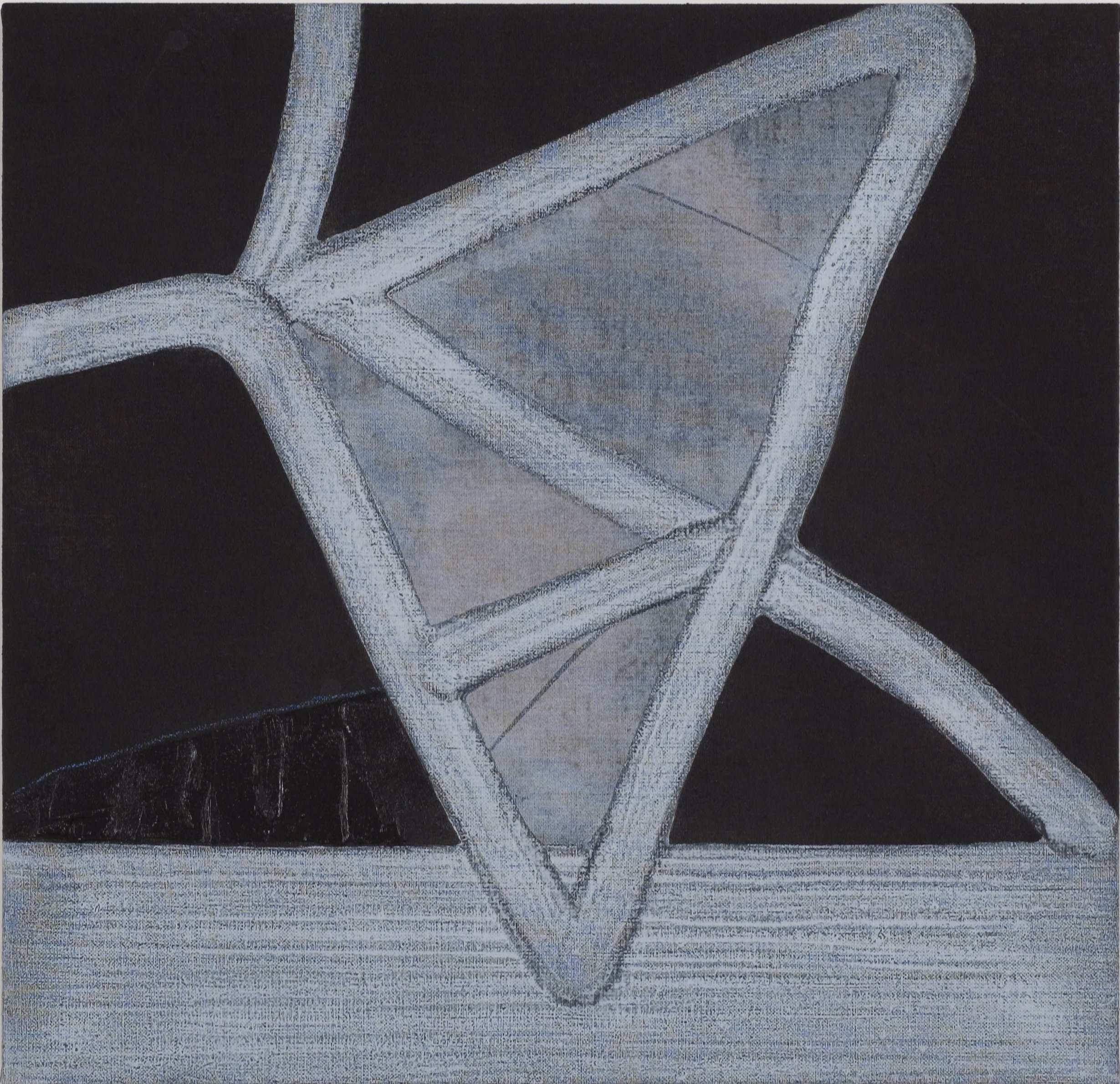spider
15 September - 11 October 2007
Liverpool Street Gallery
The title of Peter Sharp’s latest body of work, Spider, is indicative of the artist’s new focus of enquiry, but in no way does it directly imply a literal interpretation nor realistic rendering of the subject. Rather, Sharp’s new paintings, sculptures, prints and drawings articulate his conscious and intuitive understanding of a spider and its world. He achieves this visual translation of the subject via a process of abstraction, which is grounded in his meticulous drawings of spider webs.
One morning, whilst Sharp was in the desert near Lake Mungo in New South Wales, he noticed the delicate beauty of dew-covered webs on surrounding saltbushes and their subtleties enthralled him. Beguiled, he spent the next two hours drawing until the rising sun burned the dew off the webs. Drawing is a way of ‘seeing’ for Sharp and continues to be the foundation of his practice. It is his way of collecting information and visual thoughts. Sharp, using charcoal, draws forms, contours and silhouettes directly from the subject in nature, then crops, erases and redraws the original shapes in order to create an abstraction of his experience in situ.
By drawing the subject matter in situ, Sharp translates his visual comprehension of the subject and its elements into the two-dimensional format of a drawing, without compromising its elemental truth. The artist Philip Guston once said that he favoured the open-ended qualities of abstraction because, he believed that a recognisable image “excludes too much. I want my work to include more”.[1] Sharp’s abstractions not only assimilate his conscious response to his subject, but are also a poetic transformation of the essence of the subject matter.
And what is the essence of the subject matter? Spiders are feared because of their potential to inflict harm, yet can aptly weave a complex web. Their silken threads are fragile and tenuous, but can withstand the strongest winds. Light is reflected from them and passes through them. A web’s ephemeral beauty is captivating.
Philip Guston once observed that “to paint is to always start at the beginning again”.[2] When Guston said this he was referring to the fact that every painting has a narrative; it returns to the basic elements of its structure and process. Like Guston, Sharp recognises the necessity of beginning again, that is for Sharp, returning to nature and its elements. Sharp, as a skillful abstractionist, has developed a range of material techniques and a rich symbolic language that allows him to retain the truth of his original drawings while achieving a poetic transmogrification of his subject. Sharp’s paintings reflect the evolution of his drawing practice, and are an evocation of the dichotomous meanings one can ascribe to the spider and its webs.
-Michelle Cawthorn, Sydney 2007
_____________________
[1]Michael, Auping, Philip Guston Retrospective, Thames and Hudson, United States of America, 2003, p49.
[2]Philip Guston, Art News Annual, 1966, reprinted in Auping, Michael, Philip Guston Retrospective, Thames and Hudson, United States of America, 2003, p93.
Cast, 2007, seven objects, shelf length 170cm
Spider, 2007, oil and acrylic on linen, 182 x 210cm
Woven, 2007, seven objects, shelf length 182cm

Bearing

Chrysalis

Mantis

Spider Web 1

Spider Web 2

Spider Web 3

Spider Web 4

Spider Web 5

Spider Web 6

Spider Web 7

Spider Web 8

Spider Web 9

Trapdoor




